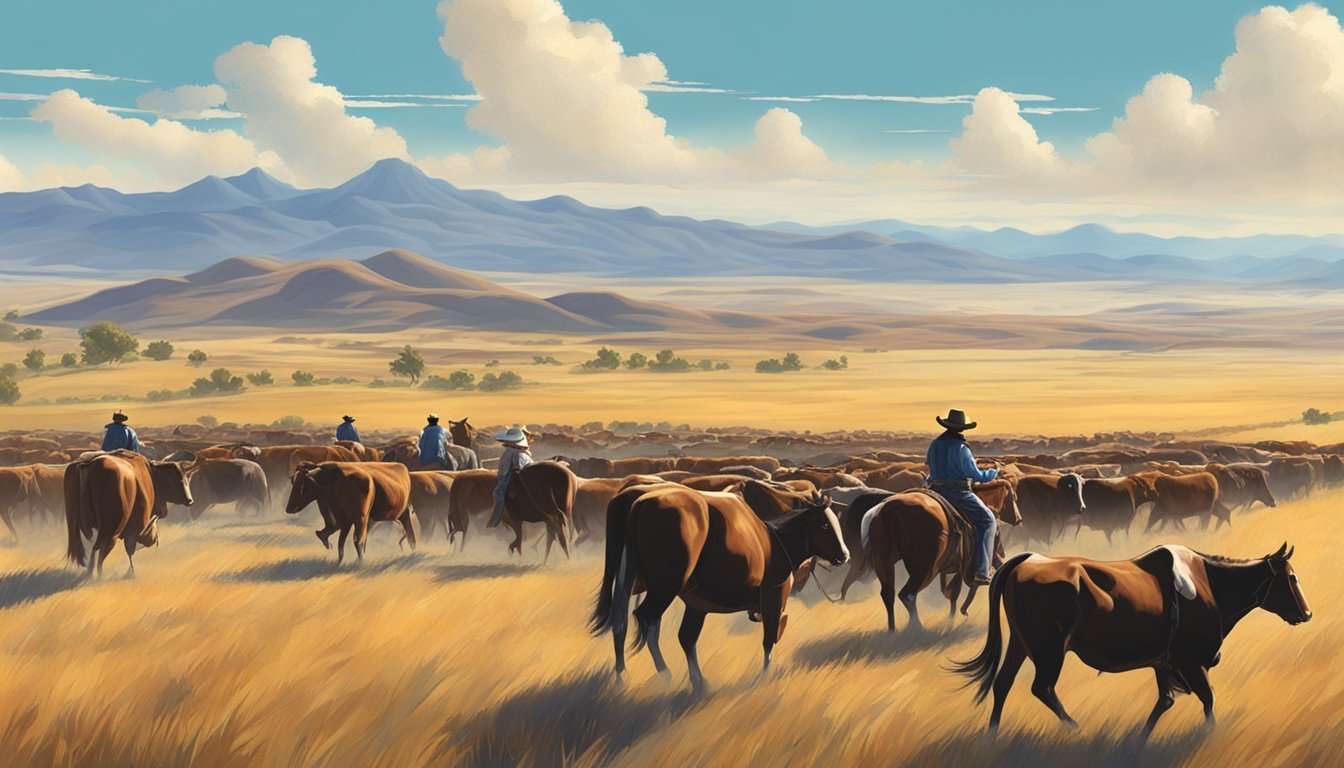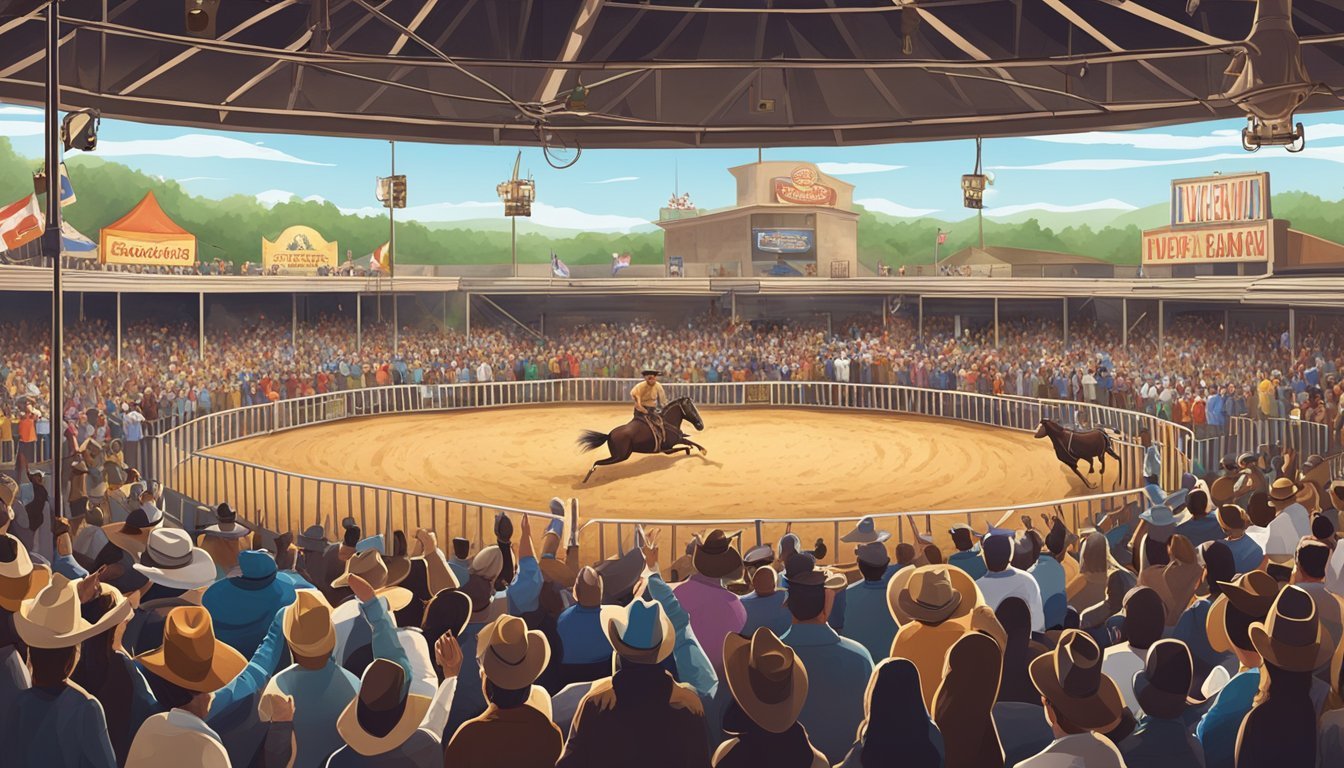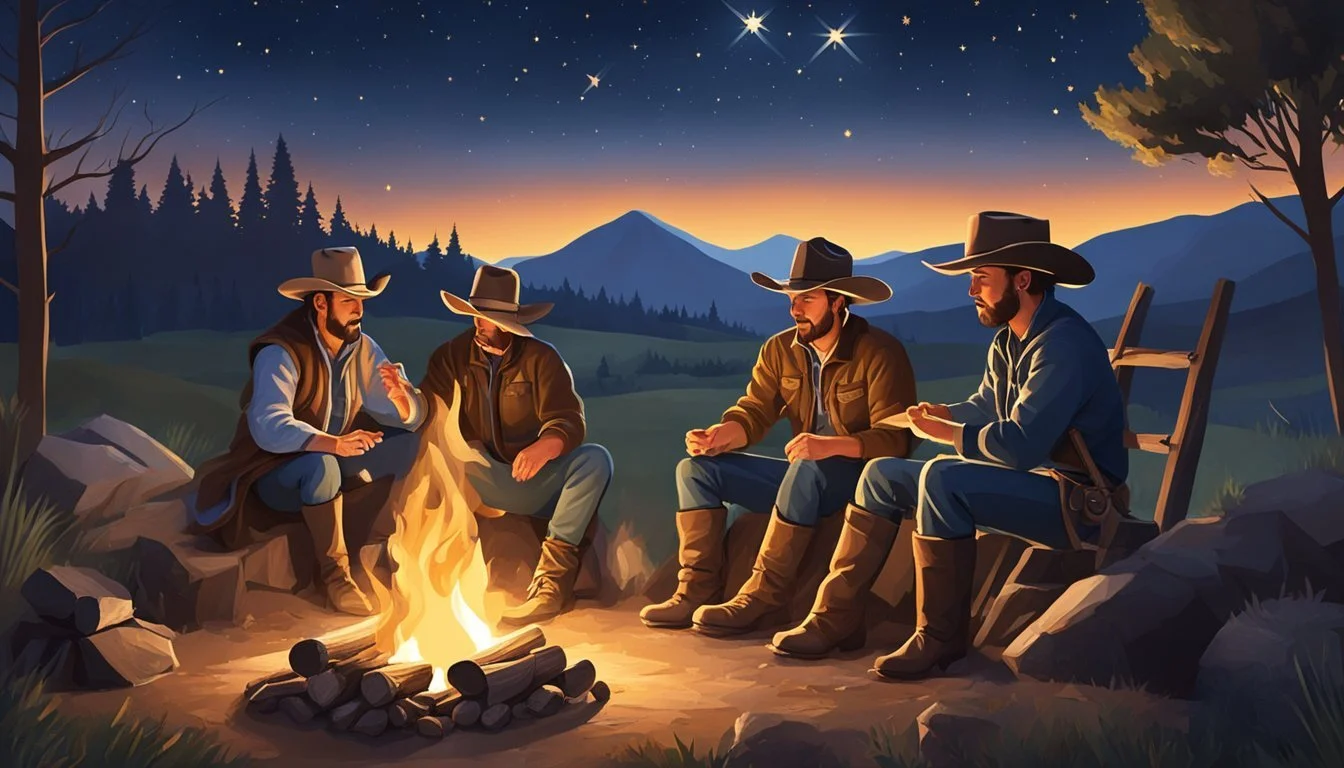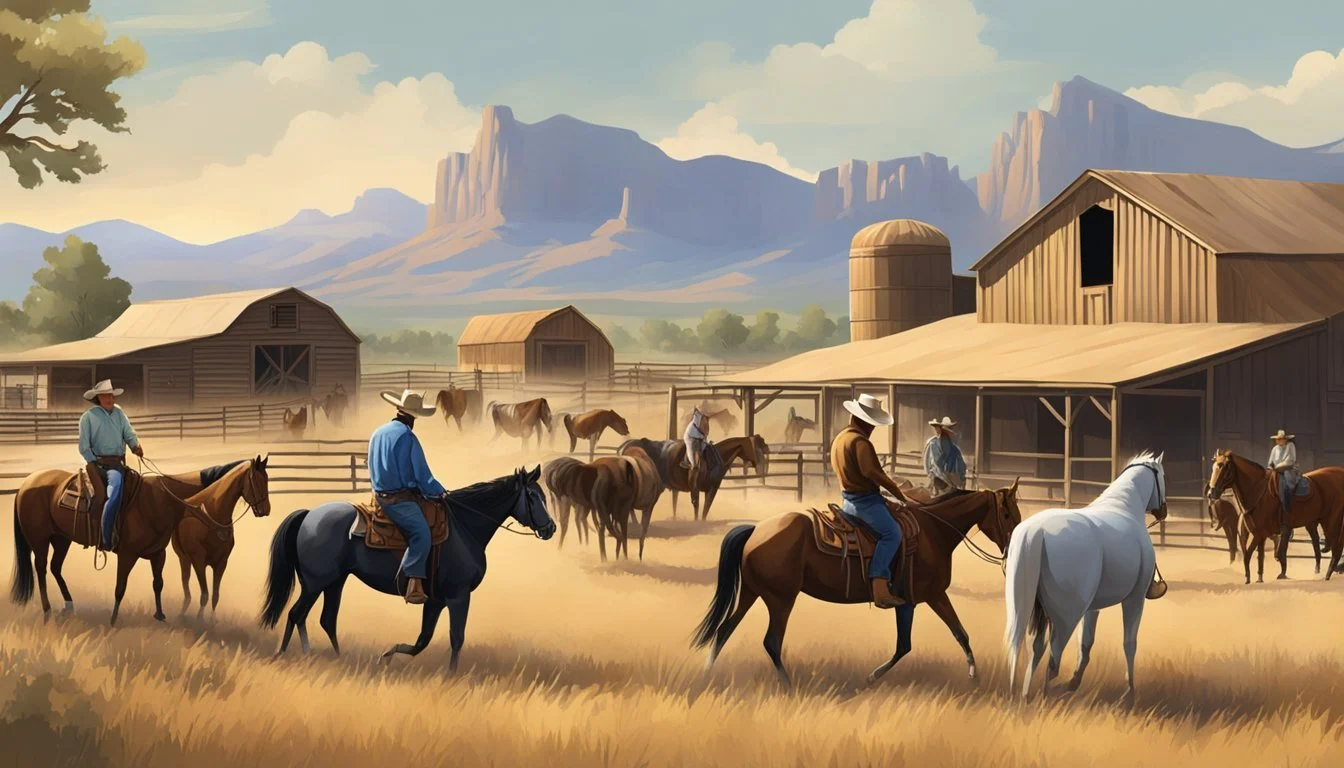The Texas Cowboy's Guide to the Best Western Themed Festivities
Your Essential Event Roundup
The lore of the Texas cowboy is a mosaic of adventure, hard work, and an unyielding spirit that reflects the broader Western ethos. With a rich history rooted in cattle drives and open ranges, cowboy culture in Texas is not just a relic of the past; it is a living tradition that continues to thrive in the hearts of many. Across Texas, from the Panhandle to the rolling hills, this enduring legacy is celebrated with events that offer a slice of Western life to both residents and visitors alike.
For those seeking to immerse themselves in this classic American motif, Texas serves as the perfect backdrop, boasting a bevy of cowboy-themed festivities that pay homage to the Wild West. These events range from poetry readings and music festivals that echo the sentiments of the frontier to rodeos and cattle drives that showcase the grit and skill synonymous with the cowboy way. Each celebration offers an authentic taste of Western heritage, providing a blend of education and entertainment.
Amid the modern urban landscapes, places like the Dallas/Fort Worth Metroplex and Bandera, the "Cowboy Capital of the World," host a variety of experiences where cosmopolitan life meets the rugged traditions of the West. Visitors can witness the world's largest bronze monument of Texas longhorn cattle in Dallas or partake in family-friendly activities at historical ranches that have preserved the cowboy lifestyle for generations. For those who seek to connect with the roots of cowboy culture, Texas provides an array of opportunities to step into boots and stirrups and capture the essence of the West.
The Historical Significance of Texas Cowboys
The legacy of Texas cowboys plays a pivotal role in shaping the Lone Star State's cultural and economic landscape. From vaquero roots to monumental cattle drives, their history is a testimony to the state's transformation and its influence on the broader American West.
Evolution of Texas Cowboy Culture
Texas cowboy culture blossomed from early Spanish influences, introducing the vaquero tradition of skilled horsemanship and cattle management. As Texas became American territory, this cowboy culture melded with European and Native American influences, forming a unique cultural tapestry. Rodeos, initially informal competitions among cowboys, developed into organized events celebrating the skills required in cattle ranching.
Influence of Vaqueros and Ranching
The vaqueros were the progenitors of the cowboy way of life, with techniques and knowledge that were integral to managing the vast cattle ranches that sprouted up in Texas. San Antonio became a hub for these ranching operations, contributing significantly to the local and state economy. The vaquero legacy is still honored today in places like Bandera, known as the 'Cowboy Capital of the World.'
Iconic Cattle Drives and Trails
Historically, Texas cowboys were central to the iconic cattle drives that saw millions of head of cattle herded along trails like the Chisholm Trail to railheads in Kansas. These drives were crucial economic activities, connecting Texas beef with markets in the east and establishing the state's reputation in the American West. These trail drives, which peaked between 1866 and 1886, became emblematic of the cowboy's free-spirited livelihood and tenacity.
Foundations of the Western Themed Festivities
The allure of western themed festivities lies in their rich connection to the historical and cultural tapestry of the American cowboy. These events pay homage to the skills, lifestyle, and traditions born out of ranching and rodeo life.
Rodeos and Rodeo Culture
Rodeos are the cornerstone of western themed festivities, where the competitive spirit and skills of the American cowboy take center stage. These events feature a range of competitions, including bull riding, team roping, and barrel racing. One such event is the Fort Worth Stockyards cattle drive, a daily reenactment that celebrates the historic Chisholm Trail. Visitors can experience the excitement of this living tradition and afterward, delve into the district's rich offerings.
Fort Worth - celebrated for its rodeo roots, this city hosts numerous events showcasing cowboy culture.
Tejas Rodeo Company - provides an authentic rodeo experience, complete with livestock competitions and a family-friendly atmosphere.
Western Festivals and Celebrations
Festivals embrace the wider aspects of cowboy life, often combining the excitement of rodeos with music, poetry, and communal gatherings. Such festivals create a tapestry of experiences that draw from western heritage.
Cowboy poets and musicians gather to share stories and tunes that resonate with the history and values of the cowboy ethos.
Roundups and ranch festivities offer a glimpse into the working life of cowboys, featuring the skills necessary to manage cattle and maintain a ranch.
Throughout these events, attendees can enjoy the festivities while honoring the traditions that have shaped the Western culture in the United States.
Ranching in the Modern Era
Ranching today stands at the intersection of tradition and innovation. This section explores the dynamics of contemporary ranching practices, the evolution of age-old traditions, and the balance between economic viability and conservation.
The Role of Ranches Today
Ranches continue to be vital for agricultural production, with cattle drives and working cattle ranches playing a significant role in the economy. They provide employment, support local businesses, and contribute to the preservation of open range lands. Dude ranches have also diversified the industry, offering tourism experiences that honor the cowboy heritage.
Economic Contribution:
Employment in ranch-related activities
Support for local goods and services
Adapting Traditions in Contemporary Ranching
Modern ranchers have adapted to today’s challenges by integrating new technologies and approaches into their operations. From the expansive King Ranch in Texas to the family-run estates, effective herd management has been enhanced through precision agriculture techniques. Moreover, changes like the fencing of open ranges with barbed wire have altered herding practices.
Technological Integrations:
GPS tracking for herding
Automated feeding mechanisms
Conservation and Economic Aspects
Ranching has a dual role in conservation and the economy. While it is a driver for the local and national economy, there is also a focus on sustainable practices to preserve the ecosystem. Ranchers are custodians of vast tracts of land, and the challenge lies in maintaining the health of these environments while running an economically sound operation.
Sustainable Practices:
Grazing plans to prevent overuse
Initiatives to protect native wildlife
By balancing the economic imperatives with environmentally sound practices, ranching in the modern era continues to be a cornerstone of the western heritage and a forward-looking industry.
Key Attractions and Events
Texas is rich in cowboy culture and Western heritage, offering visitors a variety of attractions and events. From thrilling rodeos to educational centers and vibrant music festivals, these experiences authentically celebrate the cowboy legacy.
Celebrate the Cowboy Heritage at Rodeos
Fort Worth Stockyards: Visitors can witness the spirit of the Old West with daily cattle drives at 11:30 AM and 4:00 PM. These drives reenact the old Chisholm Trail drives.
Rodeo Competitions: Cities across Texas host professional rodeos showcasing traditional events such as bull riding, barrel racing, and calf roping, allowing tourists to experience the excitement and skill of cowboy sports.
Cowboy-Themed Museums and Educational Centers
The Witte Museum (San Antonio): A premier institution that offers insights into Texas history, including the cowboy era, through interactive exhibits and collections.
Buckhorn Saloon and Texas Ranger Museum (San Antonio): This historic saloon has been in operation for over 130 years and features a museum space highlighting notable aspects of Texas and cowboy history.
Stockyards Museum (Fort Worth): Located in the historic Livestock Exchange Building, it offers a deep dive into the cattle industry’s role in shaping the Texas economy and cowboy culture.
Music and Dance at Country Western Festivals
Texas is a hub for country music, an integral part of cowboy culture. Festivals throughout the state feature:
Live Performances: Renowned and up-and-coming country music artists perform, creating an immersive musical experience.
Dance Halls: Traditional dance halls come alive with two-stepping and line dancing, creating a communal space to enjoy the sounds and moves of country western music.
Culinary Traditions of the West
In Texas, the essence of cowboy culture extends to its distinctive culinary traditions, where chuck wagon cuisine and regional dishes take center stage, celebrating the state's rich history.
Chuck Wagon Cuisine
Chuck wagon cooking originated on the open plains during cattle drives, where cowhands required nourishment to continue their arduous work. It utilizes simple, hearty ingredients that could withstand the rigors of the trail.
Key Ingredients: Beans were a staple, providing protein, while beef from longhorn cattle was often featured in stews.
Cooking Equipment: The cook, or "cookie," used a portable kitchen known as the chuck wagon, equipped with cast iron pots and a versatile Dutch oven.
Regional Dishes and Cowboy Fare
Texan cuisine boasts a variety of regional dishes that reflect the adventurous spirit of the cowboy.
Grilled and Smoked Meats: Longhorn cattle, once herded by cowboys wearing wide-brimmed cowboy hats to shield themselves from the harsh sun, now provide the beef for Texas barbecue.
Beans and Sides: Pinto beans serve as both a traditional side and a main dish, often spiced and simmered to perfection.
Fashion and Gear
When one considers the quintessential symbols of Texan cowboy culture, fashion and gear are among the most distinctive elements, reflecting a rich history and a modern adaptation that incorporate both function and style.
Evolution of the Cowboy Hat
The cowboy hat, an emblem of Western heritage, has undergone significant transformation from its origins. Initially designed for practical purposes—protection from the sun, rain, and wind—the structure of the cowboy hat has evolved. The Stetson, fondly known as the "boss of the plains," is a prime example of the cowboy hat's enduring legacy. It has seen variations in crease, crown, and brim that reflect both regional preferences and fashion trends.
Ranchwear and the Modern Cowboy
Ranchwear has adapted to meet the needs of the contemporary cowboy while staying true to its roots. Brands like Wrangler have been pivotal in this evolution. They've championed durable, comfortable clothing that suits the daily rigors faced by cowboys. Modern ranchwear includes:
Jeans: Often reinforced and designed to fit comfortably while riding.
Shirts: Crafted with materials that withstand the elements and feature snap buttons for easy removal.
This gear does not only serve practicality but also stands as a testament to the Western lifestyle that values resilience, quality, and style. Western-themed festivities put these elements on full display, allowing cowboys and enthusiasts alike to showcase both traditional and modern interpretations of cowboy attire.
Horse and Livestock Management
In the world of Texas cowboys, horse and livestock management are fundamental, hinging on trusted traditions and advancements in handling techniques. Here, horses are not just transport; they are partners in herding, while modern livestock handling marries time-honored methods with new efficiencies.
The Role of Horses in Cowboy Life
Horses serve as the cornerstone of cowboy culture. In Texas, a cowboy's horse is highly valued for both horse riding and herding activities. The relationship between cowboys and their horses is built on deep trust and mutual respect, developed through daily interaction and work. Cowboys prefer breeds like Quarter Horses, known for their agility and responsiveness, making them ideal for navigating cattle through varied terrain. The bond shared with their horses is pivotal in managing cattle and executing ranch duties.
Modern Techniques in Livestock Handling
Livestock management has seen significant innovation, yet still relies on foundational practices. Key strategies include:
Low-stress herding: Techniques that work with animal instincts to move livestock calmly and effectively.
Use of ATV's alongside horses: Combines traditional with contemporary, where appropriate, to gather and move livestock.
Smart tagging: Utilizes technology to track health and movement, ensuring optimal welfare.
Handling of broncos, which are untrained or wild horses, requires a knowledgeable approach, where safety of both the animal and handlers is paramount. Cowboys today might integrate humane training methods to domesticate broncos, a process that demands skill and patience.
In summary, horse and livestock management in Texas melds heritage with progress, where horses are respected partners and modern methods enhance the storied practices of the cowboy.
Preserving Cowboy Traditions
The Texas cowboy legacy thrives through active preservation efforts aimed at education and communal engagement. These efforts ensure the spirit of the Wild West is not just remembered but experienced by new generations.
Education and Immersive Experiences
Educational programs are crucial in keeping the cowboy heritage alive. They provide tangible connections to the past through immersive experiences that highlight skills like horsemanship, cattle herding, and ranch management. Museums and historical societies across Texas play a pivotal role, offering interactive exhibits and live demonstrations that transport visitors to the days of the Wild West.
Cowboy Experience Programs: These are designed to offer hands-on learning experiences, such as:
Trail Rides: Riding horseback on historical trails.
Roping Workshops: Learning the skill of lassoing, an essential cowboy talent.
Historical Reenactments: Participating in staged scenarios replicating historical events.
Educational Outreach: It aims to instill appreciation in the younger population. Schools often collaborate with these programs to provide field trips to ranches and historical sites, especially in states like Wyoming, often referred to as the "Cowboy State."
Role of Cowboy Associations and Clubs
Cowboy associations and clubs provide a social fabric that upholds cowboy traditions through various activities and events.
Competitions and Rodeos: These events showcase cowboy skills and are critical to maintaining traditional practices. Highlights include:
Event Type Description Rodeos Competitive events featuring riding and roping. Chuckwagon Races Contests that replicate the food delivery methods of the Old West.
Preservation Clubs: Groups dedicated to the conservation of cowboy lore and practice. Their functions often encompass:
Promoting ethical ranching practices.
Organizing social events where cowboy culture is celebrated, such as campfire gatherings.
Advocating for the preservation of historical cowboy sites and artifacts.
Associations and clubs also work towards legislative efforts to protect cowboy-related heritage sites, ensuring the longevity of this unique American tradition. They become stewards of the cowboy legacy, promoting a lifestyle that honors the pioneers of the past while adapting to contemporary times.
Cowboys Across the American West
The cowboy legacy spans multiple states, each contributing unique cultural elements to the Western heritage. The cowboy's role evolved from early Spanish influences to a recognized symbol of American history.
Ranching in States Beyond Texas
Ranching thrived in multiple states across the American West, becoming integral to their economies and cultures. Texas might be synonymous with cowboys, but states like Montana, Kansas, Oklahoma, and Colorado have rich ranching histories. Montana's vast open ranges supported large herds of cattle, while Kansas was known for its significant cattle towns like Dodge City. Oklahoma's ranching arose post-Civil War, remarkably influencing local economies. In Colorado, the ranching lifestyle integrated into the state's mountainous terrain, echoing the cowboy's adaptability.
Idaho, Utah, and California also boasted vibrant cowboy cultures. Idaho's rugged landscape, similar to Montana's, served as an ideal setting for herding. California's blend of the Wild West brought the vaquero traditions, while Utah's landscape offered a challenging yet rewarding setting for cowboys, shaping their unique Western character.
The Influence of Native American and Charro Cultures
The American cowboy cannot be discussed without acknowledging the influence of Native American and Charro (Mexican cowboy) cultures. These groups were instrumental in shaping the cowboy way of life. Native American tribes, such as those in Oklahoma and surrounding states, were adept at integrating their traditions with ranching and herding practices. Their horsemanship, knowledge of the terrain, and cattle management strategies played a significant role in the cowboy's daily life.
The charros likewise left an indelible mark on cowboy culture. With origins dating back to colonial Mexico, charros were skilled horsemen and ranchers known for their distinct attire and rodeo events, such as charreadas or Mexican rodeos. The charro's influence is particularly notable in states like California and Texas, where their cultural practices merged with those of American settlers, collectively enriching the cowboy heritage.
Cowgirls, while historically less visible in the narrative, were undoubtedly present and influential. States like Texas and Colorado saw spirited cowgirls who contributed to ranching and rodeo, demonstrating that the cowboy spirit transcends gender.







